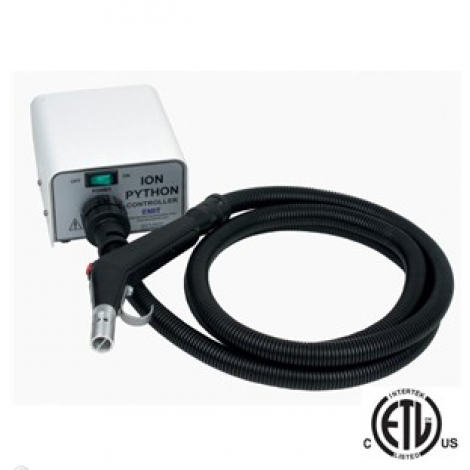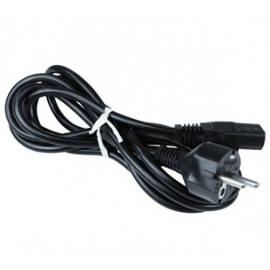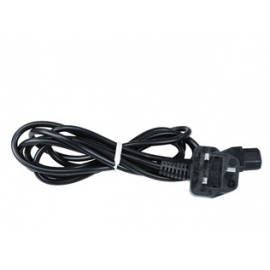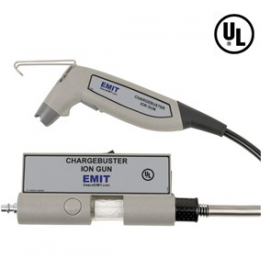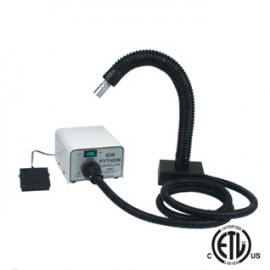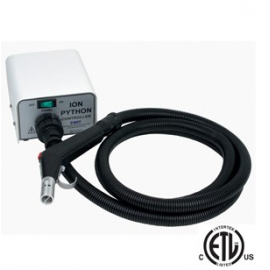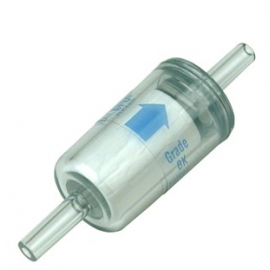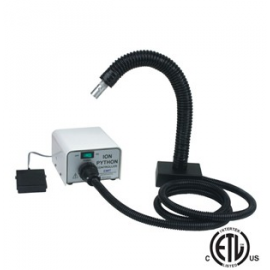DESCO #50622 - Ion Python With Hand Gun And Hose, 120VAC
- RM0
- Availability:In Stock
- Brand: Desco
- Product Code: #50622
- Point-Of-Use Ionizer, Adjustable (30-100 PSI) Compressed Air Ionizer
Neutralize bulk static charges and aids in controlling contamination by dislodging dust and debris attracted by static electricity - Detachable ESD Safe Hose 7' Hose
Ergonomically designed flexible hose with thumb-button - Adjustable Balance (±20 Volts) with Less Than 1 Second Discharge Time At 6 Inch
For use with multiple requirements where static charges may generate - Stainless Steel Housing
Minimizes foreign objects debris, corrosion, and other contamination when used in clean or sensitive areas - Optional Multi-Mount, Hands-Free, Python Attachment
For use on a bench top or other custom mounting application that allows the operator hands free operation by controlling the unit with the foot switch. - Nitrogen Compatible
Contact the factory for modifications and adjustments needed - Made in the United States of America
- Low Ozone Emissions – tests well below the OSHA limit of 0.05 ppm ozone
The Ion Python is a point-of-use ionizer using compressed air or nitrogen to neutralize electrostatic charges from a small, defined area and/or to facilitate removal of charged particles. These ready-to-use units are designed for use in applications and areas where ElectroStatic Attraction contamination create manufacturing or handling problems (Ref: ESD Handbook TR 20.20 paragraph 5.3.6.5.2.4 Point of Use Ionization). The Ion Python meets or exceeds the recommended technical requirements of ANSI/ESD S20.20 tested in accordance with ANSI/ESD S3.1.
NOTE: Air nozzles are recommended for intermittent applications. They require filtered, dry, non-combustible gases, such as compressed shop air or nitrogen. If using nitrogen, contact the factory for modifications and adjustments needed.
“Necessary non-conductors in the environment cannot lose their electrostatic charge by attachment to ground. Ionization systems provide neutralization of charges on these necessary non-conductive items (circuit board materials and some device packages are examples of necessary non-conductors). Assessment of the ESD hazard created by electrostatic charges on the necessary nonconductors in the work place is required to ensure that appropriate actions are implemented, commensurate with risk to ESDS [ESD sensitive] items”. (ANSI/ESDS20.20-2007 Foreword)
“In order to mitigate field-induced CDM [Charged Device Model] damage, the ESD program shall include a plan for the handling of process-required insulators. If the field exceeds 2,000 volts/inch, steps shall be taken to either: A) Separate the insulator from the ESD-sensitive device by a distance of 30 cm (12 inches); or B) Use ionization or other charge mitigating techniques to neutralize the charge.” (ANSI/ESDS20.20-2007 section 8.3)
“The primary method of static charge control is direct connection to ground for conductors, static dissipative materials, and personnel. A complete static control program must also deal with isolated conductors that cannot be grounded, insulating materials (e.g., most common plastics), and moving personnel who cannot use wrist or heel straps or ESD control flooring and footwear. Air ionization is not a replacement for grounding methods. It is one component of a complete static control program. Ionizers are used when it is not possible to properly ground everything and as backup to other static control methods. In clean rooms, air ionization may be one of the few methods of static control available.” (ESD Handbook TR20.20 Ionization, section 5.3.6.1)
“All ionization devices will require periodic maintenance for proper operation. Maintenance intervals for ionizers vary widely depending on the type of ionization equipment and use environment. Critical clean room uses will generally require more frequent attention. It is important to set-up a routine schedule for ionizer service. Routine service is typically required to meet quality audit requirements.” (ESD Handbook TR 20.20 section 5.3.6.7 Maintenance / Cleaning)
"Activities that handle items that are susceptible to less than 100 volts HBM may require additional control elements or adjusted limits.” [ANSI/ESD S20.20 section 2.0]

